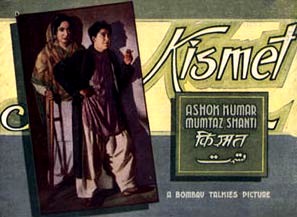Aag is a 1948 Bollywood movie produced, directed and acted by Raj Kapoor. The film marked Raj Kapoor's debut as producer and director and was the first film produced by his R.K Banner. It was also the first of many films he did with actress Nargis. Premnath, Nigar Sultana, Kamal Kapoor and Kamini Kaushal also starred in supporting roles. Raj Kapoor's youngest brother Shashi Kapoor appeared as a child artist in this film playing the younger version of his character.
Kewal (Raj Kapoor) reluctantly accepts his father (Kamal Kapoor)'s demands to continue the family tradition by studying law and become a successful lawyer just like him. However due to a lack of interest in becoming a lawyer and more interest in opening up his own theatre company, he fails his law exams and is thrown out of the house by his father. Luckily he finds a patron of the arts Rajan, (Premnath) who is the owner of a theatre company that has closed down. A childhood romance with a girl named Nimmi haunts his fantasies, and Kewal searches for her in other women, even renaming them after his former sweetheart. With a theatre, a play and a feminine image in his mind, he discovers a woman made homeless by Partition (Nargis) and the play of his dreams can at last be written and performed.
The music for this film was composed and conducted by Ram Ganguly. For his next film Barsaat, Raj Kapoor employed Shankar-Jaikishan. This duo went on to produce memorable melodies for the RK banner.
The song Zinda Hoon Is Tarah Se Mere Zindagi Nahin written by Behzad Lakhnavi and sung by Mukesh is quite popular even today.
( Inputs from Wikipedia)







